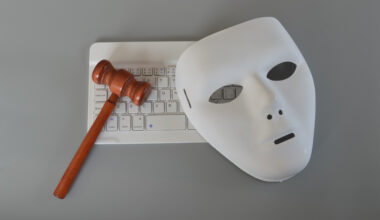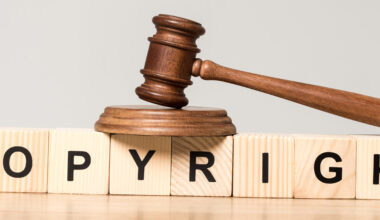Under art.20 of the Polish Copyright Act (the Law on Copyrights and Related Rights—LCRR), producers and importers of certain data carriers and reprographic equipment are obliged to pay levies to collective management organisations (CMO) which act on behalf of creators or publishers. These levies are in an amount not exceeding 3 per cent of the sales price. Proceeds stemming from the paid levies are redistributed by the CMOs to the creators. Therefore the creators are deemed to be compensated for so-called permitted private use of their copyrights, as these data carriers and equipment enable mechanical or digital mass reproduction of the published works. The levies in question are imposed on particular equipment and data carriers, such as photocopiers, scanners, paper, recordable DVDs or other similar devices as described in detail in the Regulation of Minister of Culture of June 2, 2003 on the definition of categories of devices and media used for the fixation of works and fees from these devices and media from their sale incurred by producers and importers. Even though the levies are paid by producers and importers, the consumers (private users) are the ones bearing in the end the financial burden, as the levies are carried forward by an adequate increase of the price of equipment paid at the end of the distribution chain.
Within the framework of the judgment of February 21, 2012 (I ACa 11/12),[1] the Polish Appeal Court in Wrocław had to settle the issue whether the discussed levies are due if similar fees have been paid in another EU Member State for the same goods. In other words, the court had to answer the question whether the same commodity (scanner, HDD, photocopier, etc.) may be charged with such a levy more than once on the single EU market. While agreeing to the outline of the main thesis of the judgment, the authors of this article would like to address some issues that have not been thoroughly analysed by the court, particularly related to the principle of copyright’s territoriality and EU internal market freedoms.
Standpoint of the Polish Appeal Court in Wrocław (thesis of the judgment)
The purpose of art. 20 of the Polish Copyright Act 1994 is undoubtedly to ensure that authors and publishers are fairly compensated for losses that may arise owing to reproduction of their works which are subject to copyright. However, this compensation has been established as a levy which is charged only once and calculated as a percentage of the sales price of the reprographic equipment. There are neither legal nor economic grounds for charging such levies repeatedly every time the same equipment is resold. Although beneficial for creators, publishers and CMOs, it would, at the same time, undermine the interests of the buyers. It should be borne in mind that CMOs operate not only in Poland but also in other EU Member States in which similar levies are charged. It should not be assumed that reprographic equipment is used mostly to reproduce works of Polish authors. Moreover, provided that CMOs from various EU Member States co-operate in an adequate manner, such levies collected in one EU Member State with respect to the specific equipment should provide sufficient compensation for all interested creators. While such one-time levies are commonly charged in EU Member States, there is no reason to collect them once again in Poland with respect to resale of the equipment already charged with such levies. Otherwise the duties charged in favour of authors and publishers would be unjustifiably increased, whereas the amount of the levies is not specified by law at random, but is based on the results of detailed research on estimated losses incurred by the creators.
Summary of facts and first instance proceedings
One of the CMOs having its seat in Poland (the plaintiff) requested one of the Polish sole entrepreneurs (the defendant) to provide information and documents about reprographic equipment he brought from Germany to Poland and then sold on the Polish market, such as the name of the device, its serial number, capacity, sales price, INTRASTAT declarations and purchase invoices for selected months of 2004–2009. The plaintiff’s request was based on art.105(2) of the Polish Copyright Act 1994 stipulating that every CMO is entitled, within the extend of its activity, to demand information and access to documents necessary to establish the level of the enforced remuneration and levies. Since the defendant refused that request, the plaintiff applied to the District Court (first instance court) for injunction obliging him to provide the requested documents and information. In reply, the defendant argued he was not obliged to provide the requested information and documents, as he was not an importer within the meaning of art.20 of the Polish Copyright Act 1994 since he bought the devices in the single EU market from Germany, as opposed to bringing them from outside the EU, and subsequently sold them in Poland. Consequently, the equipment he brought to Poland from Germany is not subject to the levies in question. As result, he is not obliged to provide information and documents requested by the plaintiff. The District Court deciding the case agreed on principle with the plaintiff and obliged the defendant to provide the majority of the requested documents and information. The court stated that the Polish Copyright Act 1994 does not define the term “importer”. Therefore the so-called authentic interpretation of the LCRR should apply in which the adjudicating court is requested to establish the interpretation of a term by the legislator at the moment of entering the law into force, in this case, back in 1994 when the LCRR was adopted. Also, the current Polish language dictionary definition should be taken into account, according to which “an importer” is a “person, company or country importing goods from abroad”. Therefore, bearing in mind the purpose of the levies in question, it is irrelevant whether the equipment in question was brought from EU/EEA or non-EU/EEA country. In the court’s view, art.20 of the Polish Copyright Act 1994 was intended to ensure fair compensation for Polish creators whose interests were undermined by bringing, specifically to Poland, devices enabling others to reproduce their works within the private permitted use. Therefore it does not matter that analogous levies had been already charged in Germany. The court stated that every country protects its own right holders and devices being operated in that country are the most detriment to the interests of the—here Polish—right holders, and therefore charging such levies in Poland is legitimate even though analogous duties have already been paid in another EU country. The District Court’s judgment was then appealed against to the Court of Appeal in Wrocław both by the plaintiff and the defendant, however the arguments of the plaintiff were not of the crucial nature for this case and will not be here elaborated on. The defendant argued that the judgment in question violates art.4(3) of the Treaty on the EU (TEU) along with art.26,28,30 of the Treaty on the Functioning of the EU (TFEU) in relation to the term “importer”.
Summary of Appeal Court’s reasoning
The second instance court decided that the District Court’s judgment was unlawful and should be revoked. In view of the Court of Appeal, art.20 of the LCRR by mentioning importers does not refer to entities bringing reprographic equipment from EU/EEA countries. Such entities are not importers per se. The court unambiguously stated that understanding of the term “importer” should take into account the Polish accession to the EU in terms of the systematic interpretation of law. It was noted by the court that both the EU law and the Polish implementing law distinguish situations when commodities are imported from outside the EU or merely brought from another EU Member State. In this context, the term “import” refers solely to the situations when goods are transported from non-EU counties to the single EU market. Furthermore, CMOs charging copyright levies and redistributing them to the right holders operate not only in Poland but also in many other EU countries, including Germany. It is therefore for the CMOs to provide adequate cross-border compensation. It is also not justified to artificially inflate the amount of such compensation by charging the levies each time the equipment is resold in a particular country within the EU. The Court of Appeal emphasised that it should not be assumed that reprographic equipment operated in Poland is used to reproduce the works of Polish right holders mainly. Therefore the defendant should not be treated as an importer (within the meaning of art.20 of LCRR), as he merely bought and sold the reprographic equipment on the single EU market being therefore the distributor of the equipment. In consequence, the levies in questions were not due and the plaintiff’s request for documents and information was groundless. The Court of Appeal rejected the statement of claims as brought against the defendant by the plaintiff.
Commentary
Even though the authors of this article generally agree with the standpoint of the Court of Appeal, it has to be stated that the court has not sufficiently elaborated on two important issues, namely the territoriality principle of copyright and the free movement of goods within EU that should have significant impact on this case. By omitting these, the adjudicating court enabled partially easy challenges of the judgment by the Polish Supreme Court in a possible final appeal on grounds of substantive law infringement.[2]
General remarks
First of all, it should be noted that art.20 of the Polish Copyright Law is linked to art.5(2)(b) of Directive 2001/29 on the harmonisation of certain aspects of copyright and related rights in the information society (Directive 2001/29). It is important to know that Directive 2001/29, as is underlined in Recital 20, is based on principles and rules already laid down in earlier EU directives governing copyright, in particular Council Directive 92/100 on rental right and lending right and on certain rights related to copyright in the field of intellectual property (Directive 92/100 or 2006/115, the codified version). As consequence, the jurisprudence of the Court of Justice of the EU (CJEU, formerly European Court of Justice) which was developed under Directive 2006/115 should be taken into consideration in this case. Article 5(2)(b) of Directive 2001/29 allows EU Member States to confer exemptions to the reproduction rights (exclusively owned by the creators) for the sake of non-commercial private use. Nevertheless, such a possibility is subject to the condition that creators are granted with fair compensation covering their loss due to the aforesaid permitted private use. As indicated by the CJEU in Padawan SL v SGAE (C-467/08) (judgment of October 21, 2010),[3] the concept of fair compensation should be interpreted uniformly throughout the EU. What is important is that such compensation should be calculated on the basis of the damage incurred by the creators whose profits have been diminished by the permitted private use of their copyrights. Bearing in mind the foregoing, it is worth mentioning that “double charge” of the copyright levies may in fact inflate the proceeds from these charges over what is necessary to compensate the right holders, as the Court of Appeal in Wrocław indicated in its judgment. Namely, the specific reprographic device may be exploited only in one country at the same time and its capacity is generally constant. In other words, while a certain photocopier is used in Poland, it is not used in Germany or other EU Member States and vice versa. Charging the copyright levy twice in Poland and Germany (on the same equipment) means that creators are “overcompensated”while the capacity of the device remains the same (or even decreases through exploitation, e.g. second-hand equipment). Furthermore, each EU Member State confers national treatment on the copyrights held by foreign creators coming from EU countries, which is enshrined in Berne Convention and WIPO Treaty. It essentially means treating foreign and local creators equally in terms of protecting their copyrights. Therefore a copyright holder from Poland should be equally entitled to participate in proceeds from the levies charged by the German CMO on import of reprographic equipment and vice versa.
Principle of territoriality
The principle laid down in every exclusive right, including copyright, is territoriality. It means that every state is generally independent in enacting laws on creation, exercising and expiration of the copyrights, even with respect to the same work. In consequence, the law of the country in which protection against infringement is sought is applicable to a certain work (lex loci protectionis). The principle of territoriality is observed by EU Member States and the EU as such. In this context it is necessary to mention the CJEU’s judgment in Lagardère Active Broadcast (C-192/04)[4] concerning the understanding of “equitable remuneration” referred to in art.8(2) of Directive 92/100. Such equitable remuneration is a concept similar to the fair compensation set forth in art.5(2)(b) of Directive 2001/29. The equitable remuneration is intended to compensate the performers and producers (having exclusive rights to broadcast their performances wirelessly) if a phonogram published for commercial purposes, or a reproduction of such phonogram, is used for broadcasting by wireless means or for any communication to the public. In the Lagardère case the broadcasting company was transmitting the protected phonograms from terrestrial transmitters in France and Germany. Hence the equitable remuneration for the same broadcasted phonograms could be exercised in two jurisdictions. The referring court asked the CJEU whether this company may unilaterally deduct a royalty paid in one of these states from the royalty paid in the other one. The payable royalties constituted the equitable remunerations stipulated by the art.8(2) of the Directive 92/100. The CJEU indicated in the discussed judgment that minimal harmonisation regarding rights related to the copyrights is not intended to detract from copyright’s principle of territoriality, which is recognised both in international law and EU primary law.[5] Therefore the CJEU held that the broadcasting company is not entitled to unilaterally settle off royalties payable in both of the EU Member States, as each of these states has right to exercise equitable remuneration independently, pursuant to the principle of territoriality. Nevertheless, the CJEU emphasised that each EU Member State should exercise its powers within the framework established by Directive 92/100.[6] Therefore, despite the fact that each EU Member State may require payment of the equitable remuneration, the national courts should take into account the economic value of the phonogram’s exploitation in their jurisdiction while determining the amount of the royalty to be paid. It seems that CJEU impliedly stated that Germany should not exercise the equitable remuneration in an amount equal to the one exercised by France if the majority of broadcast’s audience in located in France. It should, however, also be noted that the legal nature of the equitable remuneration differs slightly from the one of copyright levies for the act of mass reproduction of the works. Whereas the first should be understood as related to the intensity of use of the work,[7] the amount of the second type of remuneration is mostly and strictly regulated by the respective mandatory provisions of law (tariffs) and, in principle, is irrespective of the intensity of the use of the “equipment charged” for private copying.
Nevertheless, the question is whether the Court of Appeal in Wroclaw observed the discussed principle of territoriality. In the authors’ view, this principle as such has not been breached in the case. However, even if the analysed principle enables Poland to exercise fair compensation for permitted private use independently, Polish national courts should tend to exercise the copyright levies within the framework (limits) as imposed by the EU law, in particular by Directive 2001/29. As indicated above, fair compensation should cover the losses caused by the permitted private use (here, reproduction of works by using certain reprographic equipment). As the copyright levies charged under art.20 of LCRR are strictly of a compensatory nature, they should be high enough to cover the losses, but not too high, so the creators are not unjustly enriched. Since the specific reprographic device may be used in one country at the same time, has relatively constant capacity, may be used to reproduce both foreign and local works, and the entitled creators are subjects the national treatment in all EU Member States, the right holders are fairly compensated when such a levy is charged for the first time. Therefore charging analogous levies once again in another EU Member State (without refund of the levies already paid) exceeds the limits of fair compensation and becomes unjust enrichment, which seems to be incompatible with art.5(2)(b) of Directive 2001/29.
Free movement of goods
Without doubt, the copyright levies charged under art.20 of the Polish Copyright Act 1994 (and analogous ones levied in other EU countries) have an impact on the free movement of goods, which is essential for single EU market. It was pointed out by the defendant that charging such levies in case they analogous charges had been already paid in other EU country, violates inter alia art.30 of the TFEU, which provides that EU Member States are prohibited from imposing customs duties on imports and exports and charges having equivalent effect. Unfortunately, the Court of Appeal in Wroclaw has not analysed this issue as thoroughly as it could. In the view of the authors of this article, the levies in question are neither customs duties nor charges having equivalent effect. Such an outlook is reinforced by the fact that (1) the discussed levies are also imposed on domestic goods produced in Poland and (2) they are not charged because the commodities merely cross the Polish border but rather because equipment is sold in Poland.[8] Nevertheless, it is worth considering whether charging such levies (in cases where the analogous charges have already been paid in another EU country) may constitute “measures having equivalent effect to quantitative restrictions on import”, which are prohibited under art.34 of the TFEU. This concept includes large range of various measures and restriction. As indicated by the CJEU in the landmark case Dassonville (8/74),[9] all trading rules enacted by the EU Member States which are capable of hindering, directly or indirectly, actually or potentially, the trade between two or more EU countries are to be considered as measures having an effect equivalent to quantitative restrictions. Such measures may be applicable both distinctly (imports only) and indistinctly (imports and domestic goods alike). Once adopted and exercised, they may result in raising the prices of imported commodity or impeding the entry of goods into the country of delivery. In the light of the foregoing, it is rather beyond dispute that copyright levies charged on every reprographic device brought into Poland constitute such a measure, as the sales price is increased as a result. The question is whether such measure may be subject to derogations under art.36 of the TFEU or the so-called mandatory requirements developed by the CJEU’s jurisprudence. Such derogations may be exercised only if there is no EU secondary law governing protection of legal interests that may justify violation of free movement of goods,[10] whereas the matter in question is governed by Directive 2001/29 in this case. It is also worth noticing that equipment which is charged twice with the copyright levies (first in Germany, then in Poland) is more expensive that the same or similar equipment produced in and imported directly to Poland.
Conclusions
Generally, the authors of the article share the outlook of Court of Appeal in Wroclaw that the defendant made an intra-Community acquisition of reprographic equipment rather than an import thereof. Such an interpretation of art.20 of the Polish Copyright Law is therefore compatible with the relevant provisions of law; however, the court in Wroclaw has not analysed the issues of free movement of goods and the principle of territoriality, which seem to be crucial for that decision. First it may be controversial, under the principle of territoriality, whether such levies may be exercised in each EU country independently. In giving an answer to this question, one should point out that the principle of territoriality is also observed under EU law and in jurisprudence. Nevertheless, EU Member States must not exercise their powers out of the limits imposed by EU law. Such a concept is totally logical, as all EU countries have vested part of their independence in the EU once they have acceded thereto. Namely, the powers of each EU Member State stemming from principle of territoriality should not be exercised in a manner hindering objectives of primary and secondary EU law or violating freedoms/prohibitions imposed by this law. Such boundaries for exercising the powers under principle of territoriality are particularly drawn by Directive 2001/29 and TFEU, in the case of the copyright levies as referred to in art.20 of the Polish Copyright Act. Article 5(2)(b) of Directive 2001/29 requires EU Member States to adopt measures enabling fair compensation of the creators; however, as described above, charging copyright levies twice in different EU countries may result in an unjust enrichment of the creators and the CMOs representing them which is incompatible with the aim and provisions of the aforesaid Directive 2001/29. The powers of EU Member States are also limited by the TFEU’s provisions establishing a single EU market, e.g. by art.34 of the TFEU. In this case, charging the copyright levy with respect to bringing the specific reprographic device into Poland, where an analogous levy has already been paid in another EU country with respect to the same equipment, may be considered as a measure having equivalent effect to quantitative restrictions on import which is prohibited under art.34 of the TFEU as a violation of the free movement of goods conferred by the TFEU. Apart of the foregoing, one additional issue requires a bit of reflection. Namely, it seems that EU lawmakers have skipped the matter of co-operation between CMOs while harmonising specific areas of IP law. Assuming that the standpoint of the Polish Court of Appeal in Wroclaw is correct, and keeping in mind how copyright levies are common in EU countries, there are no adequate regulations governing how the CMOs operating in various jurisdictions should divide these charges between themselves and how the proceeds should be redistributed to the various creators from different EU Member States. Perhaps this matter will be settled soon at EU level. [10]
The article was first published by European Intellectual Property Review, Issue 10/2012 p. 732-736 and has now undergone only minor changes.
1 See http://orzeczenia.wroclaw.sa.gov.pl.
2 In Poland facts cannot be validly challenged in a final appeal and by a Supreme Court decision. The judgment was appealed to the Polish Supreme Court in August 2012 (see: V CSK/366/12).
3 Padawan SL v SGAE (C-467/08) [2011] E.C.D.R. 1.
4 Lagardère Active Broadcast v SPRE (C-192/04) [2005] E.C.R. I-7199; [2005] 3 C.M.L.R. 48.
5 Lagardère Active Broadcast [2005] E.C.R. I-7199; [2005] 3 C.M.L.R. 48 at [46].
6 Lagardère Active Broadcast [2005] E.C.R. I-7199; [2005] 3 C.M.L.R. 48 at [49].
7 See S. von Lewinski, “Rental and Lending Rights Directive” in M. Walter and S. von Lewinski (eds), European Copyright Law: A Commentary (Oxford University Press,
2010), p.324, para.08.06.22.
8 See for instance the CJEU’s judgment in Dounias v Oikonomikon (C-228/98) [2000] E.C.R. I-577.
9 Procureur du Roi v Dassonville (8/74) [1974] E.C.R. 837; [1974] 2 C.M.L.R. 436.
10 See for instance the CJEU’s judgment in Commission v Belgium (C-2/90) [1992] E.C.R. I-4431; [1993] 1 C.M.L.R. 365.
10 The new draft directive on collective management of copyright and related rights and multi-territorial licensing of rights in musical works for online uses in the internal market does not, however, foresee specific provisions related to the levy in question. See: COM(2012) 372 final.










